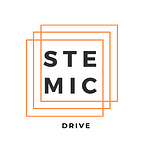Driving Pattern Analytics in the Smartphone Age
The synergy of sensing, computing, and communication on modern smartphones is enabling high-resolution insights into human behavior. Recent research has attempted to leverage these insights for improved personal activity recognition, ranging from simple activities such as walking and running to more sophisticated ones like, whether the user is laughing in a social gathering or is riding a car, bus, or a train.
At Stemic we intend to develop a driver behavior risk engine based on smartphone features that allow us to create our proprietary smartphone telematics ecosystem. We aim that our solution could tell whether a user is a driver and while he drives what risk score he builds. With data collected we build our driving risk analytics engine that is run on machine learning models that predict and forecast the potential risk the driver is going to face. But let’s take step by step by digging into our solution that is built with the intention to save lives.
Part I. How Does The Smartphone Help to Collect Driving Data?
Part II. How Do We Build a Driving Pattern Risk Score?
Part III. How Driving Pattern Risk Score Is Helping Mobility Industry Actors?
Part I. How Does The Smartphone Help To Collect Driving Data?
There is a never-ending debate about OBD or smartphone? Which solution should be chosen to collect driving data? The companies providing telematics solutions should be categorized into two distinct classes based on how they source their data :
- those that are using the on-board diagnostic (OBD) devices
- and those that rely only on smartphones
OBDs benefit from precise measurements of vehicular speed, accelerator throttle, and various engine conditions, all sourced from the vehicle’s internal computer.
The smartphones rely on the various sensors that capture information about the car's motion patterns, the driver’s activities, and broader background context.
Unsurprisingly, a debate is brewing that essentially asks: can the smartphone be an effective substitute for the OBD? More specifically, given that a vehicle’s speed is a critical input to driving analytics, the debate degenerates to whether smartphone sensors can infer instantaneous speed. If it can, then the smartphone can become a superset of OBDs, i.e., it can match an OBD in understanding the car’s motion patterns, and far exceed the OBD in sensing the driver’s personal behavior.
Even though no single smartphone sensor can directly estimate speed like the OBD, they can together orchestrate information from various sources to achieve a 96% similarity to OBD. This orchestration involves understanding when a car stops and turns from accelerometers and compasses, utilizing crowd-sourced data from the roads, leveraging the driver’s historical patterns, etc.
Smartphone as Telematics
A smartphone has a “sense of motion” — called an accelerometer. An accelerometer is an electrical sensor that measures acceleration that consists of the difference between speed, velocity, and acceleration:
Speed — How fast an object is moving, usually expressed as distance over time (example: 5 meters per second)
Velocity — How fast an object is moving and in which direction (example: 5 meters per second, to the west)
Acceleration — The rate of change in the velocity of an object. Since it’s a rate of change, it’s expressed as distance over time (speed), per unit of time. For example, to change the speed from 0 to 60 kilometers-per-hour in 10 seconds, an object must accelerate at 1.6667 meters per second squared.
A smartphone measures acceleration across three axes, traditionally labeled as x, y, and z. The measurements are sampled multiple times per second. Each measurement reflects acceleration across one of the axes. Taken together, you can get a sense for the phone’s overall direction. Depending on the direction of the phone’s movement, acceleration values might have a positive or negative value.
Smartphone telematics accuracy lies in contextual data collection abilities
We observe that while smartphone sensors are noisy on one hand, the variety of sensors available to them, in conjunction with their access to the Internet, makes it an extremely agile and powerful platform.
Smartphones are good that they are not built for telematics they are built as computers, to perform multitasks for a user. This is how smartphones can record contextual information necessary in our case contextual mobility tracking: location, traffic conditions, speed limits and traffic signals, and weather conditions.
Further research in sensor fusion and machine learning will enable deeper insights into driving behavior, including aggressive braking and acceleration, accidents, etc.
Finally, it is possible to execute such data-driven analytics on a low energy budget, implying that a smartphone-based system is amenable to public adoption. In light of these advantages, and more that are emerging in the field of mobile sensing, the smartphone platform is likely to become a superset of OBDs in a vast majority of driving scenarios.
About Stemic Drive
Stemic Drive is a next-generation usage-based insurance (UBI) technology platform. We manage the full life cycle of data. From acquisition to transformation to analytics to insights for predictive insurance dynamic pricing. We are providing a risk score for the driver and fleet. We are targeting insurance companies that want to leap in UBI for their clients. We provide all the toolset and platform to run UBI business smoothly. Visit www.stemicdrive.com
